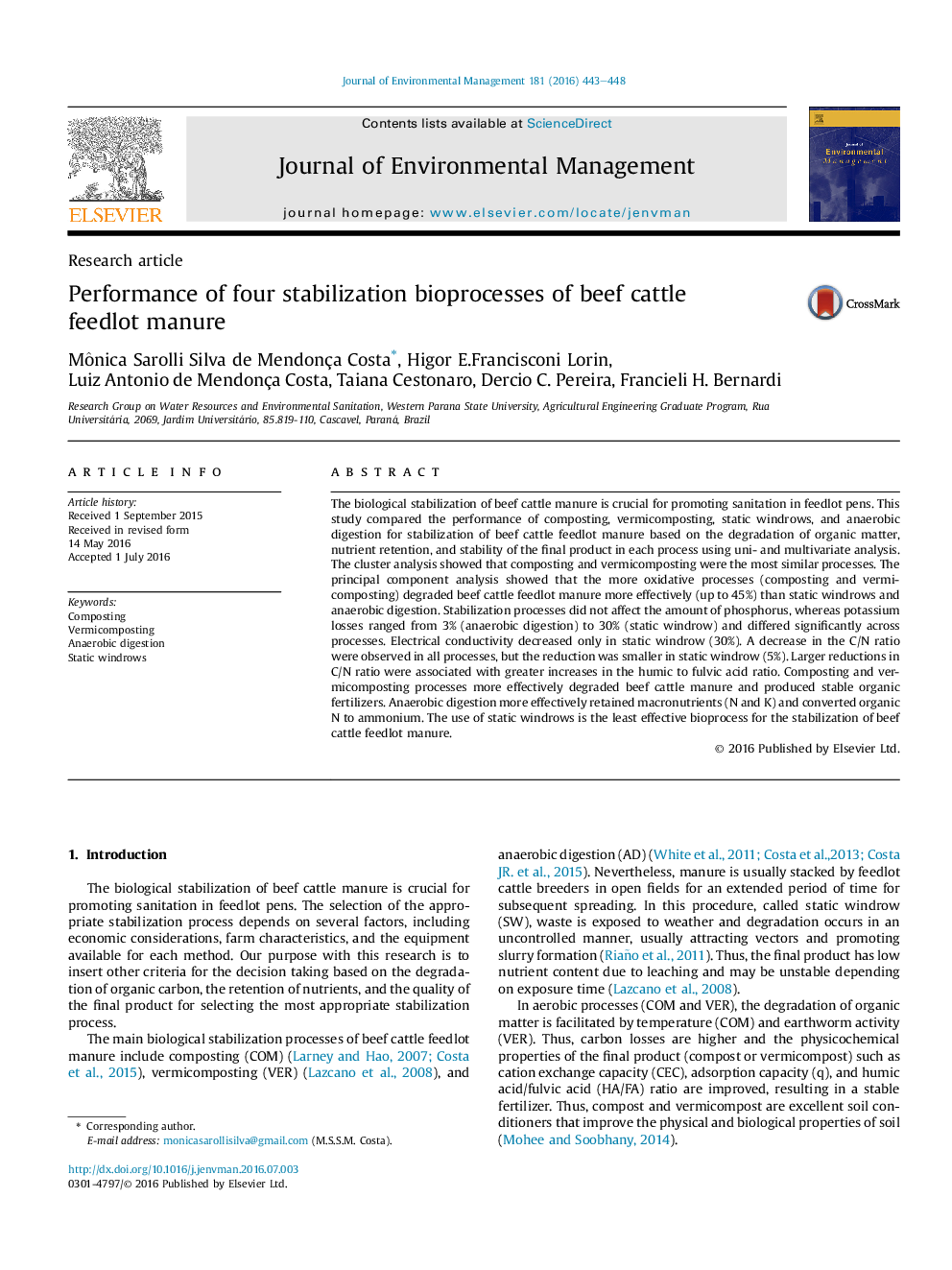| Article ID | Journal | Published Year | Pages | File Type |
|---|---|---|---|---|
| 7479721 | Journal of Environmental Management | 2016 | 6 Pages |
Abstract
The biological stabilization of beef cattle manure is crucial for promoting sanitation in feedlot pens. This study compared the performance of composting, vermicomposting, static windrows, and anaerobic digestion for stabilization of beef cattle feedlot manure based on the degradation of organic matter, nutrient retention, and stability of the final product in each process using uni- and multivariate analysis. The cluster analysis showed that composting and vermicomposting were the most similar processes. The principal component analysis showed that the more oxidative processes (composting and vermicomposting) degraded beef cattle feedlot manure more effectively (up to 45%) than static windrows and anaerobic digestion. Stabilization processes did not affect the amount of phosphorus, whereas potassium losses ranged from 3% (anaerobic digestion) to 30% (static windrow) and differed significantly across processes. Electrical conductivity decreased only in static windrow (30%). A decrease in the C/N ratio were observed in all processes, but the reduction was smaller in static windrow (5%). Larger reductions in C/N ratio were associated with greater increases in the humic to fulvic acid ratio. Composting and vermicomposting processes more effectively degraded beef cattle manure and produced stable organic fertilizers. Anaerobic digestion more effectively retained macronutrients (N and K) and converted organic N to ammonium. The use of static windrows is the least effective bioprocess for the stabilization of beef cattle feedlot manure.
Related Topics
Physical Sciences and Engineering
Energy
Renewable Energy, Sustainability and the Environment
Authors
Mônica Sarolli Silva de Mendonça Costa, Higor E.Francisconi Lorin, Luiz Antonio de Mendonça Costa, Taiana Cestonaro, Dercio C. Pereira, Francieli H. Bernardi,
